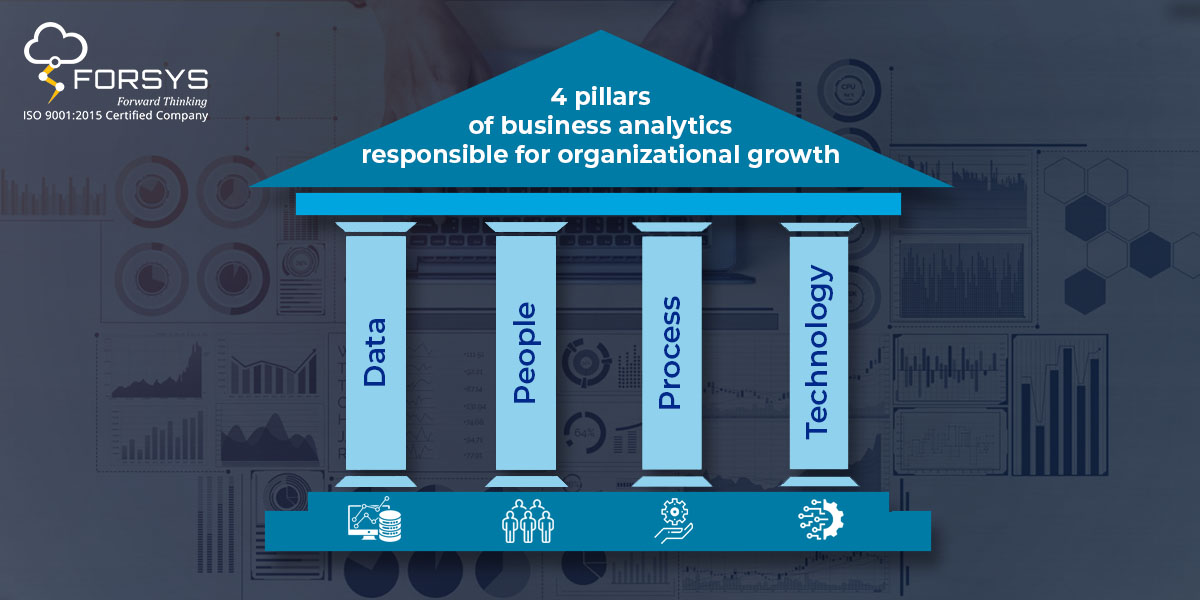As consumers globally made adjustments to the new normal with the advent of the Covid-19 pandemic, their expectations underwent a drastic change. Industry insiders believe that the customer expectations have touched an all-time high, pushing businesses to outperform competitors, enhance efficiency and garner higher revenue.
As a result, business analytics emerged to become one of the most popularly used services. The use of business analytics gained mainstream value and continues to witness robust demand due to its ability to provide insights, predict an organization’s future and draw inferences from raw data leading to a thinner margin for decision error.
What is business analytics?
It is defined as the process of collecting data, evaluating business performance, and creating insightful conclusions that enable enterprises to make error-free decisions leveraging varied statistical methods and quantitative techniques.
It goes without saying that a company must stay informed on the best business practices and latest industry trends to maintain competitiveness in the modern marketplace. Business analytics empowers organizations to take tremendous leaps forward in less time by offering the much-needed clarity to create effective strategies and a detailed look into the different challenges and opportunities resulting in growth and improvement. Simply put, it allows businesses to maximize the value of their data, build plans, unearth insights, and respond in real-time to customer requirements.
Which are the top pillars of business analytics?
Below are the top four pillars of business analytics that deliver performance gains and bring competitive advantage to an organization.
• Data
Everyone will agree all business users look for more and more data. And that too not just within the company (such as traditional sources) but also from outside sources (like social media data and real-time geo-location data). The presence of the data pillar helps balance governance and access, connect disparate data sources irrespective of their location and type, acts as a base component for business strategy building and creates a virtual data warehouse that is secure and easy to use.
• People
The presence of the people pillar helps unify the IT and business communities to achieve the company goals. The needs of IT focus on a program-driven, visually rich and assembly-style development environment, and the business community users demand personalized self-service that enables them to embed analytics practically in any app and display anywhere.
• Process
This mainly focuses on the entire company and builds a fact or data-driven culture. Reason? Having the right data at the right time results in quicker and accurate decisions. Here, the users rely on facts to make business decisions. Since different roles are responsible for different decision types, it’s essential to use the same data to support varied processes.
For example, while customer decisions depend on testimonials, business proposals and reports, dashboards are used by operational and executive users for making decisions. All the different mentioned outputs should be created with reusable components and shared with varied groups to maximize use.
• Technology
This pillar includes development and deployment with systems that disintegrate silos of capability. The tools or platforms used should support integration, be open and extensible so that an easy-to-adapt flexible architecture can be built. The technology pillar drives cloud adoption because it can be replaced without disintegrating the stack in its entirety.
Does Forsys offer business analytics services?
Yes, we do. Forsys is a business analytics pioneer that offers a robust suite of advanced analytics services built around industry-leading solutions and supports the complete analytics cycle. We have expertise in leading business analytics tools and technologies such as Tableau, QlikView, Oracle Analytics Cloud, Oracle Transactional Business Intelligence (OTBI) and Oracle Data Integrator (ODI).
Forsys’ advanced data analytics team leverages data engineering to create strong data infrastructure to go beyond the what, find out the why, plan for the future to ensure the client makes the most of the data. For over a decade, our processes and methodologies have helped businesses of all sizes and from different industries to formulate business analytics strategies that support the decision-making processes, unlock insights and identify emerging trends.
Conclusion
To sum up, business analytics implementation will fail to deliver the intended results unless approached with the right partner and an end-to-end business transformation mindset. The ability to connect the dots within business analytics is simple when you collaborate with a world-class business analytics solution provider that allows you to visualize, analyze and share actionable insights over billions of data records. Enterprises that can recognize analytics as a strategic source of competitive advantage and implement it can unlock new market opportunities as soon as they arise.
Want to use analytics to make calculated business decisions that help improve operational efficiency and deliver a premium customer experience? Get in touch with us now.

